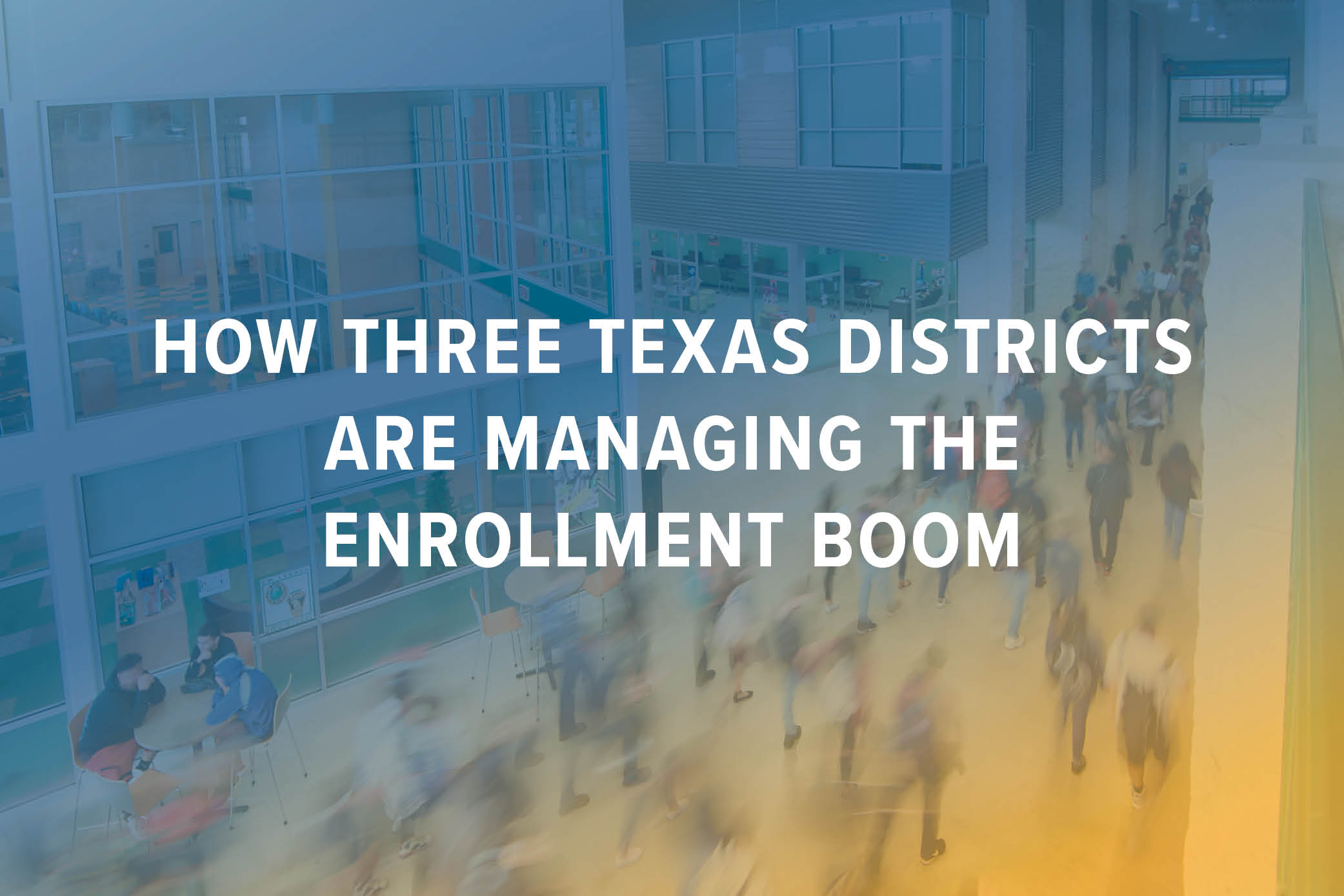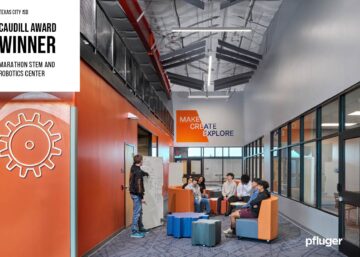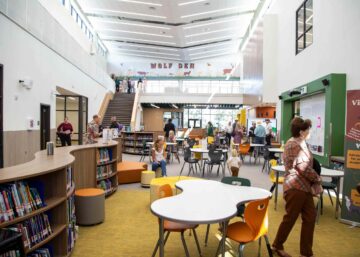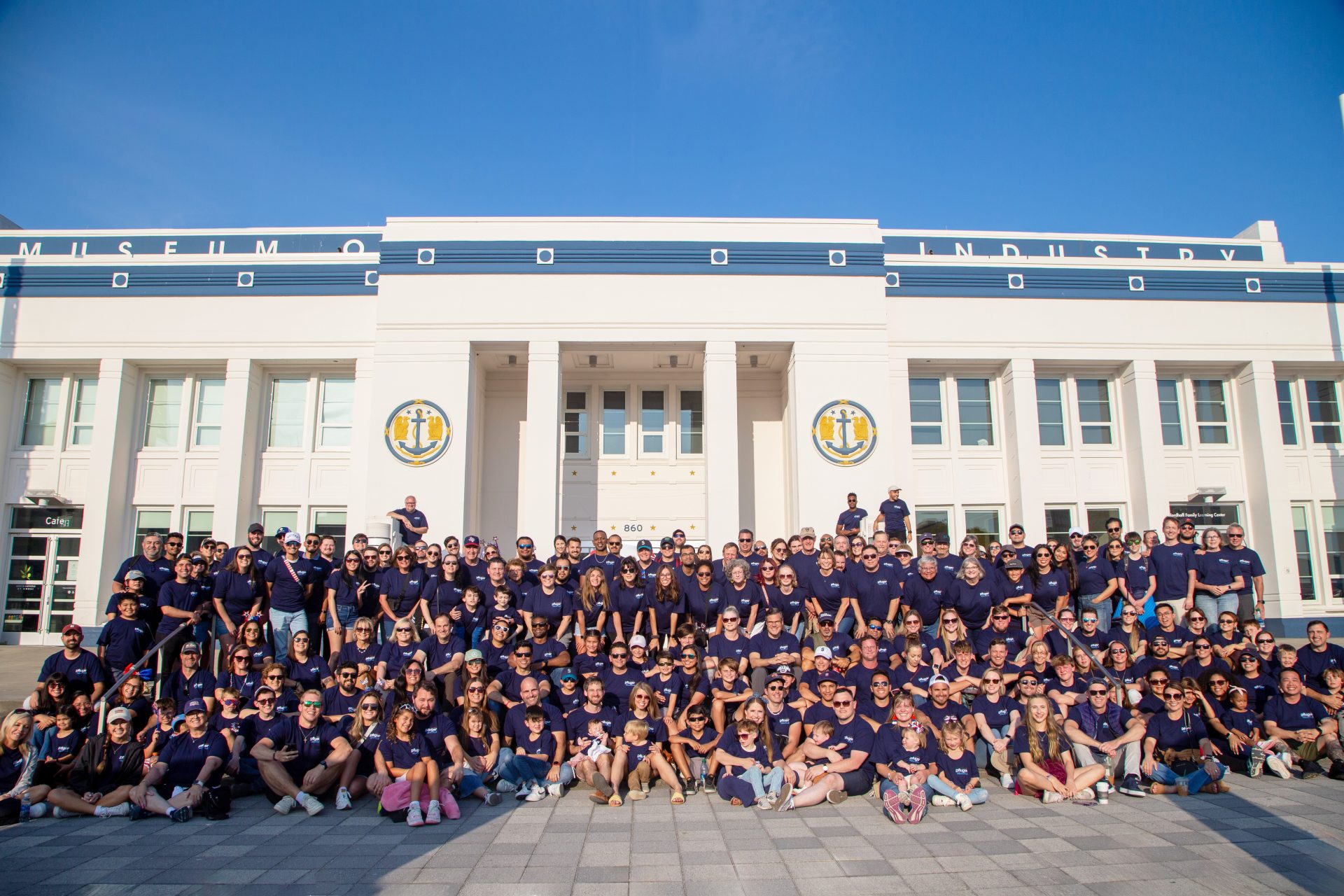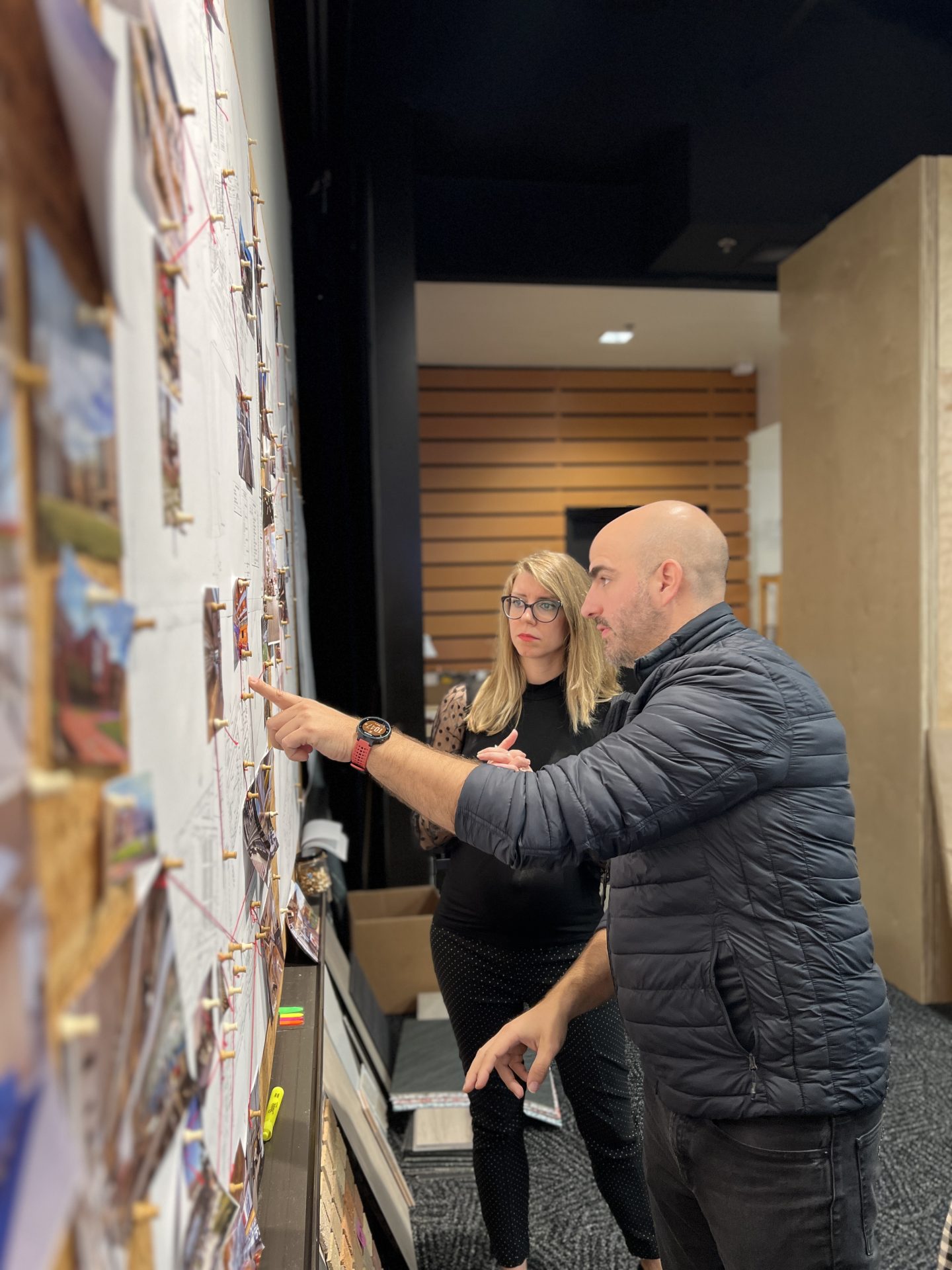It doesn’t take a state report to know that many Texas school districts are struggling to keep up with soaring enrollment. Step on a campus in any number of districts, and you’ll probably find crowded classes, packed hallways, and portable classrooms.
There is no one-size-fits-all solution for dealing with fluctuating enrollments so we’d like to give some examples of how three districts—Houston ISD, Eanes ISD, and Marion ISD have resolved some unique and challenging issues.
The Urban District
Houston ISD is part of Region 4 which serves 22.1% of the state’s total enrollment. With a 5.3% enrollment increase since the 2013-14 school year, according to the TEA publication, Enrollment in Texas Public Schools 2018-19.
As an urban district, many of Houston’s schools are landlocked—as was the case with the district’s Wilson Montessori School in the Montrose area of Houston. The district had an added challenge upgrading this campus to accommodate increased enrollment because the existing facility is a 1920s-era historical structure that could not be externally altered.
With fifty percent of the student population in portable classrooms, the district had to find a long-term solution that included maintaining access to an existing park and playground, accommodating required parking counts, and ensuring the safe separation of students from parking and driveways.
Working with Smith & Company Architects, Pfluger designed a three-story addition that would extend from the back of the historic property. Unfortunately, the portables were on the location of the new addition. Four new portable classrooms were brought in for the duration of construction and operational before the start of construction. Except for the summer months, the campus was occupied and operational throughout construction with measures put in place to maintain the security and safety of students.
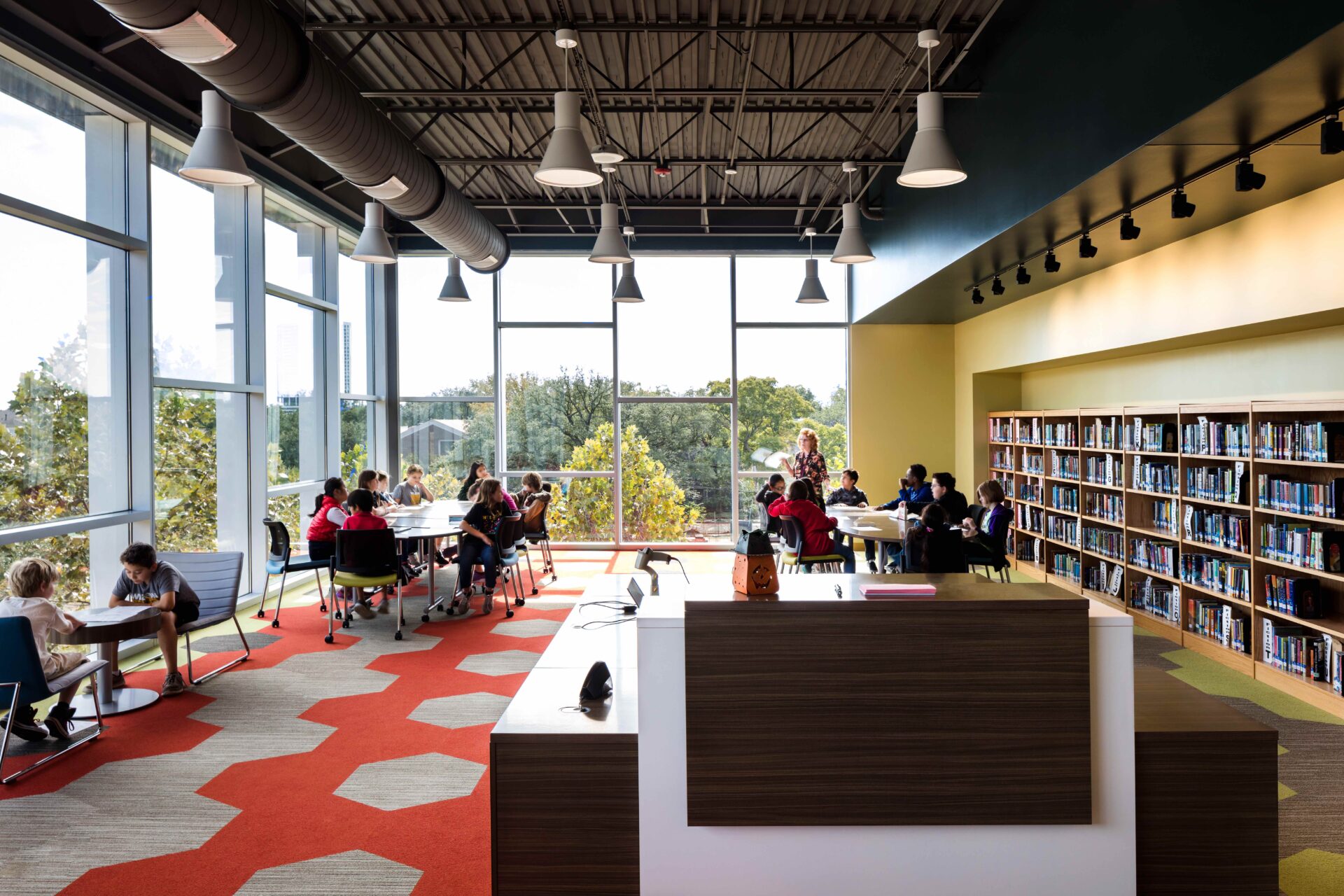
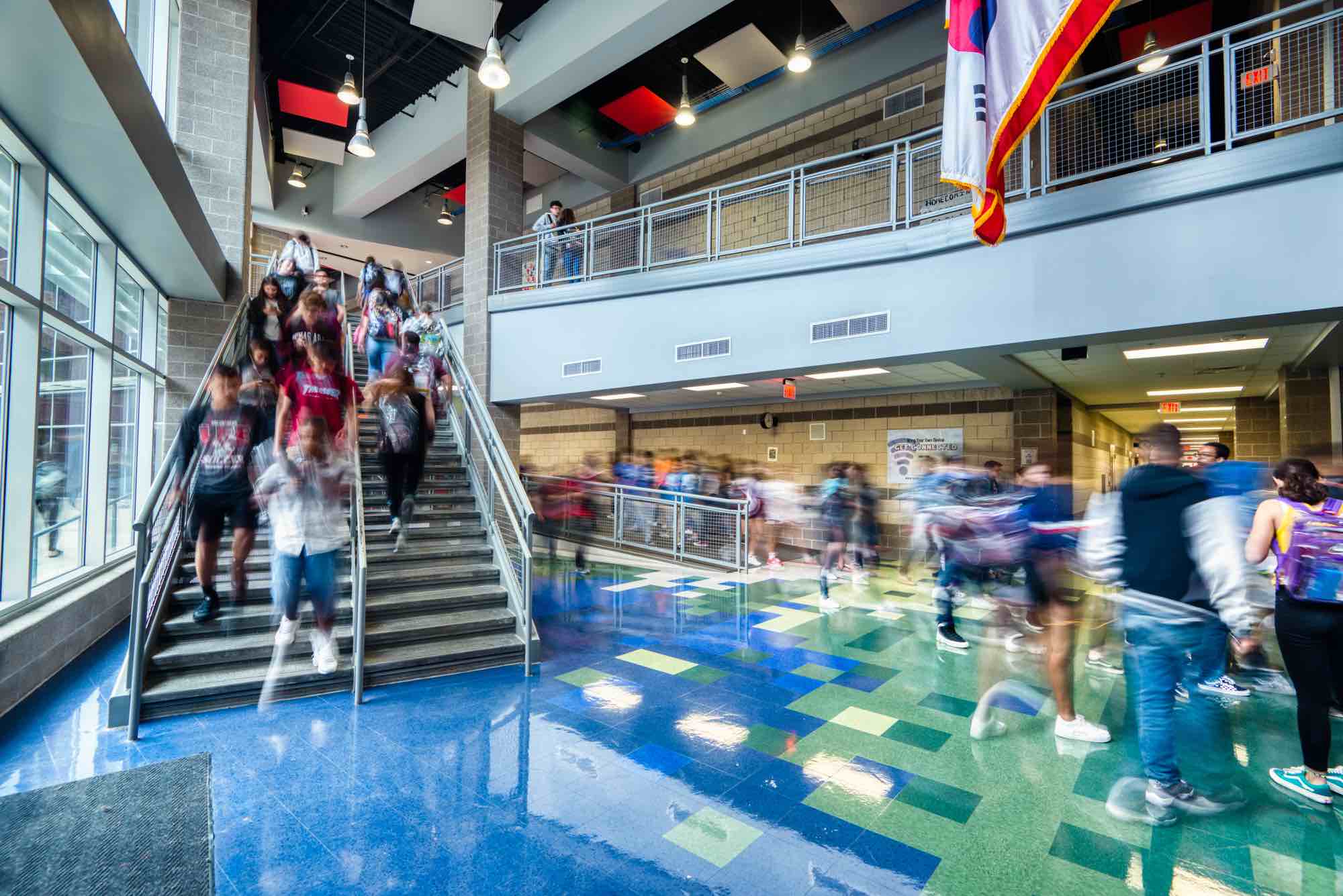
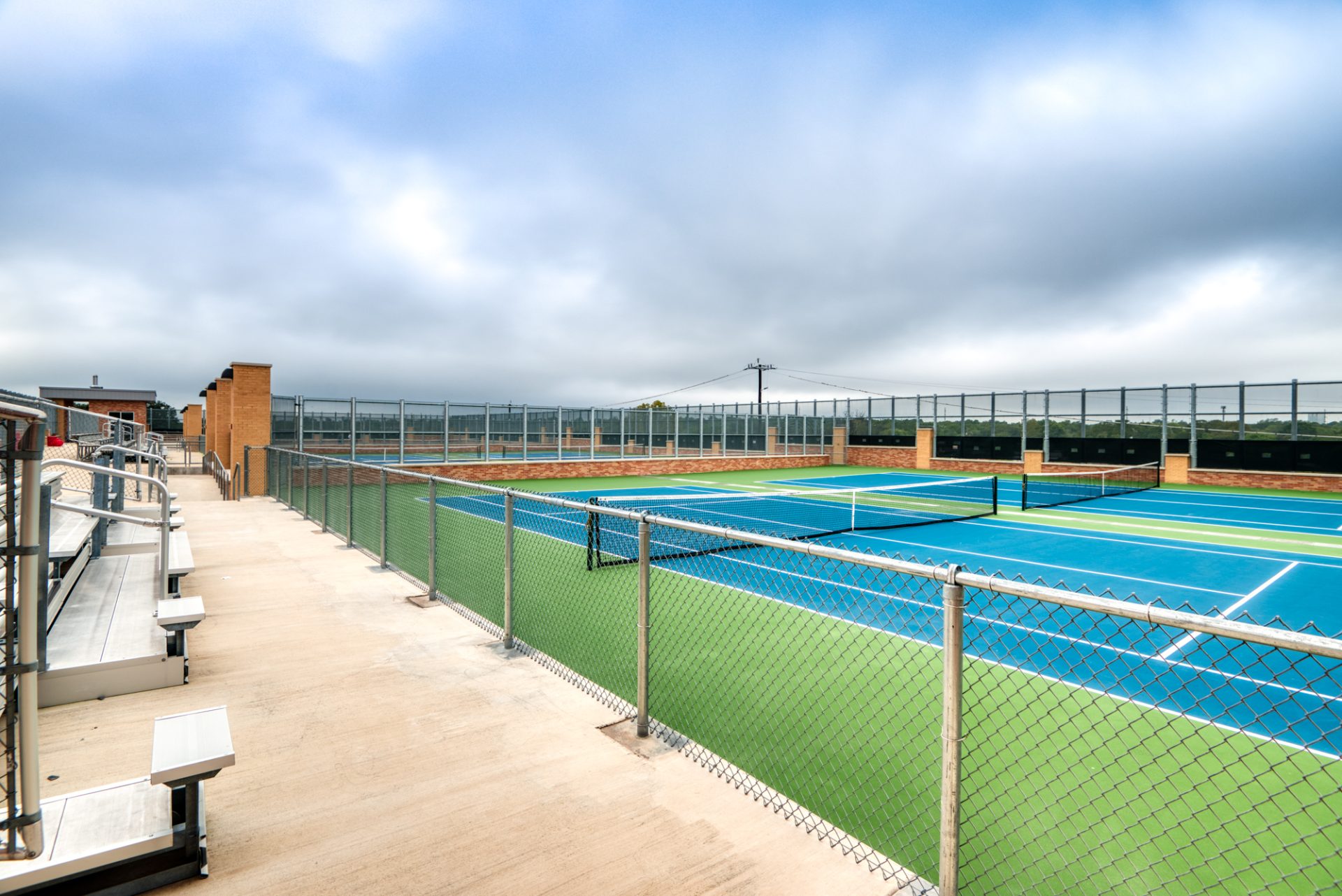
The Suburban District
Legacy of Educational Excellence High School (LEE) is one of the oldest campuses in San Antonio’s North East ISD. The campus includes two magnate programs—the Science, Technology, Engineering, and Mathematics (STEM) Academy and the North East School of the Arts (NESA). The combined enrollment is just under 2,700 students.
The campus is also home to the International School of the Americas (ISA), a separate school with project-based programming that focuses on creating global citizens. ISA has a student body of approximately 480.
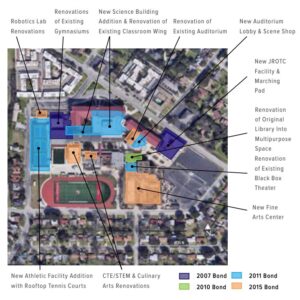
For more than a decade, Pfluger has been working with NEISD to update the 1958 campus—keeping the heritage of the original buildings intact. The major challenge was finding space on the 27-acre campus for the required programming of four schools.
In 2007, we master-planned a road map of systematic renovation, demolition, and construction that would take place on an occupied campus using the school calendar to define educational and non-education activities needing accommodation. Events such as no- noise testing dates, performance days, and athletics schedules were taken into consideration. Even with meticulous planning, things can get overlooked. For instance, the faculty forgot about a performance during a scheduled electrical shut off. We brought in temporary lighting so the show could proceed as planned.
Student and faculty safety meant construction areas were cordoned off with temporary partitions. Evacuation routes were modified as construction zones changed and fire drills were conducted during each phase as paths of egress were modified. Construction worker badging kept unauthorized individuals from accessing the job site.
The landlocked campus required creative use of facilities and free space that could be used to meet the unique needs for STEM, fine arts, LEE High School, and ISA High School. This project was about honoring the heritage of the original campus while integrating additional next- generation programming space. This is the goal of our next district.
The Rural District
Districts surrounding Marion ISD have seen student enrollment increases of up to 13%. To plan ahead for the potential spillover growth, the district hired a demographer to prepare an Enrollment Prediction Study.
In the past ten years, the district has seen fairly consistent student population growth of about 2%. The EPS report told them current, active housing developments in the district pointed toward a 9% growth rate. However, approval of new housing deals currently under consideration within district boundaries mean that number could go significantly higher.
The district recognized they would need to master plan for the potential growth while being mindful of the potential financial burden. They had previously been advised to tear down everything and rebuild. This was not an option for a district like Marion that highly values their history. They wanted an option that would honor the past, build for the present, while planning for the future.
“The board and I have appreciated Pfluger’s approach to maximize our existing campuses first, but leave the door open for new construction after the predicted growth becomes reality.”
Kelly Lindholm, Marion ISD Superintendent
Evaluation
Pfluger was hired to complete a master plan for the district which began with analyzing enrollment against capacity. We found that even a modest 2% enrollment increase would put one elementary school at capacity in a year, and the second would be at capacity in four years.
Goals
Looking at current and possible enrollments at each grade level, facility usage, programming, and student safety and security, we assembled a list of potential projects. Then we looked at that list comprehensively, including the cost of each project, and created a phasing plan that could adapt to actual growth—based on what the district could comfortably afford.
Prioritize
Our goal was to immediately increase student safety and security while maximizing campus potential and improving existing resources. By breaking the extensive list into affordable and impactful phases, we helped them with bond preparation.
On May 4, 2019 the Marion ISD community approved a $22 million bond proposition that encompassed the first phase of an $80 million master plan to accommodate existing and projected growth. The projects focused on using additions and renovations to:
- strategically maximize the existing campus potential,
- create separate campus identities for student safety and security, and
- to increase the existing campus capacities to maintain smaller class sizes.
This plan allows for future bonds to respond to actual growth numbers. Additionally, the district is on the cusp of being pushed up to 4A at which time they will need to add programs. If the double-digit growth comes to fruition, they could be bumped to 5A which requires even more program offerings. In both situations, the district will need to expand facilities.
Marion ISD is moving forward on Phase 1 and has a realistic and responsive plan for the future.
